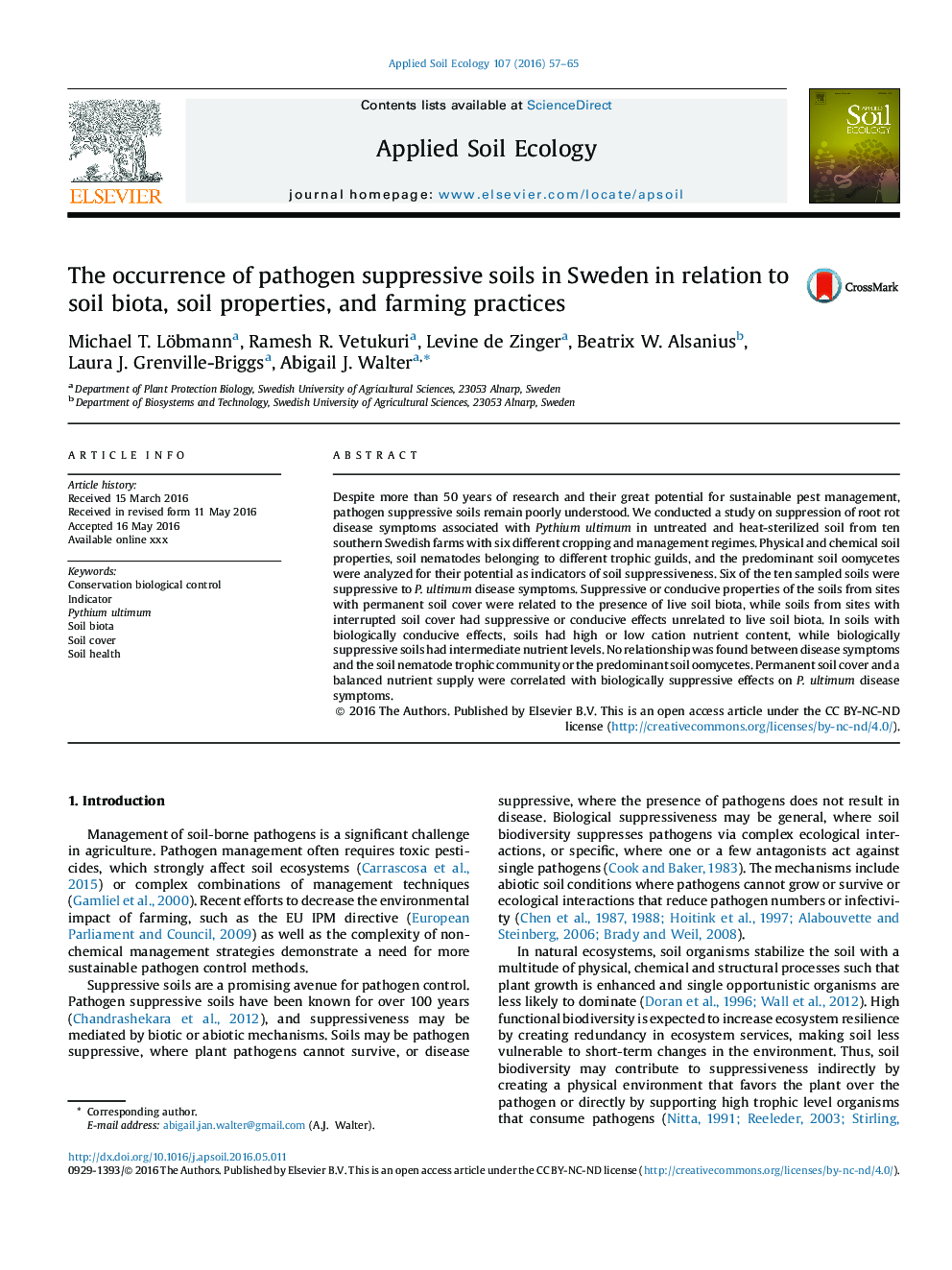| Article ID | Journal | Published Year | Pages | File Type |
|---|---|---|---|---|
| 6297595 | Applied Soil Ecology | 2016 | 9 Pages |
Abstract
Despite more than 50 years of research and their great potential for sustainable pest management, pathogen suppressive soils remain poorly understood. We conducted a study on suppression of root rot disease symptoms associated with Pythium ultimum in untreated and heat-sterilized soil from ten southern Swedish farms with six different cropping and management regimes. Physical and chemical soil properties, soil nematodes belonging to different trophic guilds, and the predominant soil oomycetes were analyzed for their potential as indicators of soil suppressiveness. Six of the ten sampled soils were suppressive to P. ultimum disease symptoms. Suppressive or conducive properties of the soils from sites with permanent soil cover were related to the presence of live soil biota, while soils from sites with interrupted soil cover had suppressive or conducive effects unrelated to live soil biota. In soils with biologically conducive effects, soils had high or low cation nutrient content, while biologically suppressive soils had intermediate nutrient levels. No relationship was found between disease symptoms and the soil nematode trophic community or the predominant soil oomycetes. Permanent soil cover and a balanced nutrient supply were correlated with biologically suppressive effects on P. ultimum disease symptoms.
Related Topics
Life Sciences
Agricultural and Biological Sciences
Ecology, Evolution, Behavior and Systematics
Authors
Michael T. Löbmann, Ramesh R. Vetukuri, Levine de Zinger, Beatrix W. Alsanius, Laura J. Grenville-Briggs, Abigail J. Walter,
